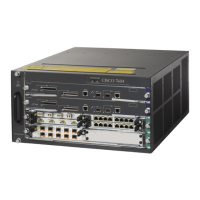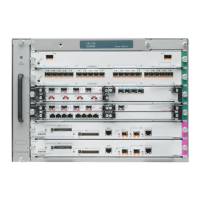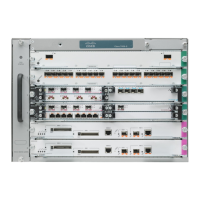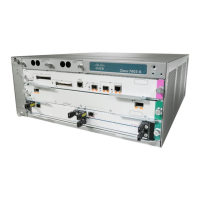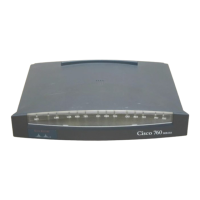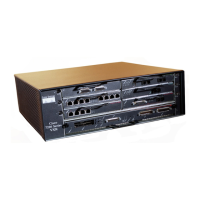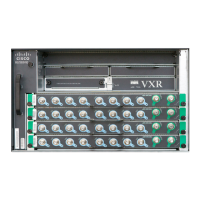25-13
Cisco 7600 Series Router Cisco IOS Software Configuration Guide—12.1E
78-14064-04
Chapter 25 Configuring IEEE 802.1X Port-Based Authentication
Configuring 802.1X Port-Based Authentication
Setting the Cisco 7600 Series Router-to-Client Retransmission Time for
EAP-Request Frames
The client notifies the router that it received the EAP-request frame. If the router does not receive this
notification, the router waits a set period of time, and then retransmits the frame. You may set the amount
of time that the router waits for notification from 1 to 65535 seconds. (The default is 30 seconds.)
To set the router-to-client retransmission time for the EAP-request frames, perform this task:
This example shows how to set the router-to-client retransmission time for the EAP-request frame to
25 seconds:
Router(config-if)# dot1x timeout supp-timeout 25
Setting the Cisco 7600 Series Router-to-Authentication-Server Retransmission
Time for Layer 4 Packets
The authentication server notifies the router each time it receives a Layer 4 packet. If the router does not
receive a notification after sending a packet, the router waits a set period of time and then retransmits
the packet. You may set the amount of time that the router waits for notification from 1 to 65535 seconds.
(The default is 30 seconds.)
To set the value for the retransmission of Layer 4 packets from the router to the authentication server,
perform this task:
Command Purpose
Step 1
Router(config)# interface type
1
slot/port
1. type = ethernet, fastethernet, gigabitethernet, or tengigabitethernet
Selects an interface to configure.
Step 2
Router(config-if)# dot1x timeout supp-timeout
seconds
Sets the router-to-client retransmission time for the
EAP-request frame.
Router(config-if)# no dot1x timeout supp-timeout
Returns to the default retransmission time.
Step 3
Router# end
Returns to privileged EXEC mode.
Step 4
Router# show dot1x all
Verifies your entries.
Command Purpose
Step 1
Router(config)# interface type
1
slot/port
1. type = ethernet, fastethernet, gigabitethernet, or tengigabitethernet
Selects an interface to configure.
Step 2
Router(config-if)# dot1x timeout server-timeout
seconds
Sets the router-to-authentication-server retransmission
time for Layer 4 packets.
Router(config-if)# no dot1x timeout
server-timeout
Returns to the default retransmission time.
Step 3
Router(config-if)# end
Returns to privileged EXEC mode.
Step 4
Router# show dot1x all
Verifies your entries.

